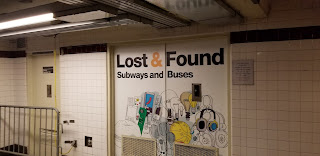Two TomsRestaurant in the Gowanus section of Brooklyn announced in October that
after more than 70 years in business, it is going to close its doors at the end
of this year.
Founded in 1948, Two Toms is an institution unlike any other
restaurant that is open to the public. It’s a modest and understated very
simple dining room in a relatively narrow space, with a street-facing entrance
in the front and a kitchen in the back. The food is outstanding and often
served family style in large groups, at least that is their specialty. I’ve
seen regular tables order off a menu there. But every time I’ve been there it’s
been a large meal with several courses.
An Italian restaurant with great pasta and shrimp parmesan
among other dishes, it’s most famous for its pork chops, that are enormously
thick and juicy and will count as one of the most memorable meals you ever
have. I rarely take photos of food, but I had to stop and takea photo of my meal while I was working on one of the pork chops there
last year.
I became aware of Two Toms after meeting a group of friends
for dinner there several years ago. The restaurant then was known mostly to
locals and has a distinct following among law enforcement. Myfriend Poppy knew of Two Toms from his time working in Brooklyn with
the NYPD and it became a regular spot for people we worked with at JFK Airport
to hold meet up.
The several courses are conducive to long dinner
conversations, the perfect setting for families and old friends. Its unassuming
décor adds to its appeal. You are at home there. You can help yourself to beer
or soda or bottled water from the refrigerator that is there in the dining
room. You knew there was going to be another amazing course coming soon. You
didn’t have to worry. Everyone was going to have a good time, and no one was
leaving hungry.
When Two Toms owner announced in October that the restaurant
would be shutting its doors at the end of the year, its many fans were in shock
and jumped into action. Loyal customers flooded the restaurant with so many
reservations they began opening extra days and even still they were quickly
booked through the end of the year.
My group of friends that took to meeting at Two Toms worked
to get a gathering together, but by the time I called to make a reservation,
all bookings were gone. I asked the woman I spoke with on the phone to please
let me know if any openings at any time for any number of people would be
available—if the usual group couldn’t make it at least a few of us would be
able to give a final farewell to the place. Social media is alight with
tributes pouring in, and legions of New Yorkers who managed to get a
reservation are paying their respects.
Two Toms achieved a devoted following because it does what
it does best simply and without pretention. It doesn’t boast a celebrity chef
or change its menu to some trendy fusion to match the hip flavor of the month.
It also refuses rest on its laurels and scream to the world about how long it
has been around either. It has stayed true to its roots and has never let up.
New Yorkers will continue to search for the kind of honest
authenticity embodied by Two Toms and we owe the legendary eatery a debt of
gratitude.
Thank you, Two Toms!
















